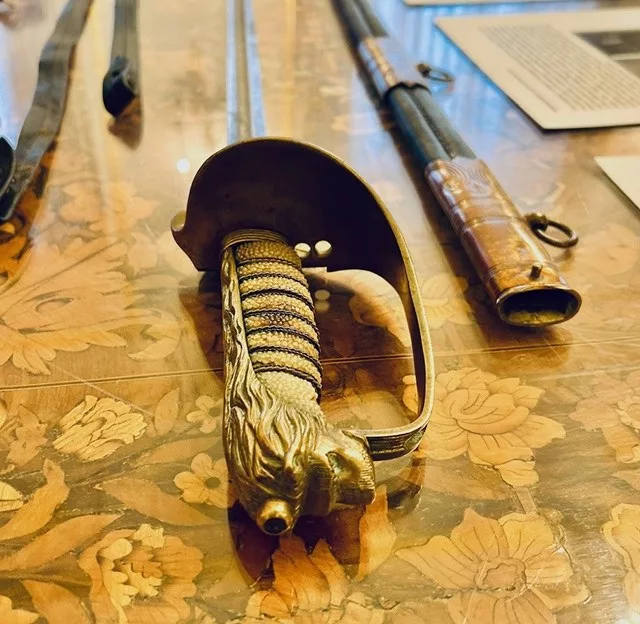A silver sword recovered from the wreck of HMS Royal Oak has returned home to Orkney after an extraordinary relay spanning continents, carried hand to hand by naval officers, diplomats and museum professionals determined to see it safely returned to the place where the tragedy unfolded.
The sword, with its elegant steel blade and ornate hilt, now rests in Scapa Flow Museum on Hoy, overlooking the waters where the battleship was torpedoed in October 1939 with the loss of 835 lives, many of them teenage boys.
It stands as a poignant memorial, linking the present day to one of the darkest chapters in Orkney’s wartime history.
For decades, the sword was treasured by a Canadian family whose grandfather had been given it by a diver in Portsmouth after the war.
Captain James Atwood, a retired Royal Canadian Air Force pilot, felt its rightful place was not in a family drawer, but in Orkney, close to the resting place of the men who perished.
“Ultimately I wanted to see it go into a suitable museum in Orkney where it could go on display, close to the resting place of those who perished in the disaster,” he said.
“For others to benefit and learn from.”
The journey began with a flurry of emails and phone calls as Captain Atwood reached out to naval contacts and museum curators.
What followed was a feat of coordination involving the Canadian High Commission, the UK Consulate in Vancouver, Royal Museums Greenwich and Orkney Islands Council’s museum service.
At every stage, the sword remained in the personal care of trusted hands, passing from Canada to London and on to Orkney in a chain of goodwill and remembrance.
Along the way, a remarkable connection emerged: a Canadian midshipman, Peter Grosvenor Piddington, lost aboard the Royal Oak, was found to be linked to Esquimalt, the same community where the sword had been held for so long.
His surviving family were able to view the sword before it left Canada, adding a deeply personal resonance to the story of its return.
At Scapa Flow Museum, the sword joins the permanent collection documenting the strategic role of Orkney’s natural harbour during both world wars. Social History Curator Ellen Pesci said it was gratifying to see the sword in its rightful place.
“The power of artefacts is that they make stories and history relatable and tangible,” she said.
“This sword has already spoken volumes for a family in Canada, and now it can speak to everyone who visits the museum and remembers the men of the Royal Oak.”
Councillor Gwenda Shearer, Chair of the council committee responsible for cultural services, paid tribute to those who ensured its return.
“We can’t thank Captain James Atwood enough for starting on the long journey to deliver this sword to our care,” she said.
“It is now where it belongs, close to the place it was found and to the resting place of many.”
The Royal Oak tragedy remains one of Britain’s greatest wartime losses of life in a single incident.
Eighty‑five years on, the return of this humble ceremonial sword ensures that the story of those lost continues to be told, honoured and remembered in the islands they called home.





